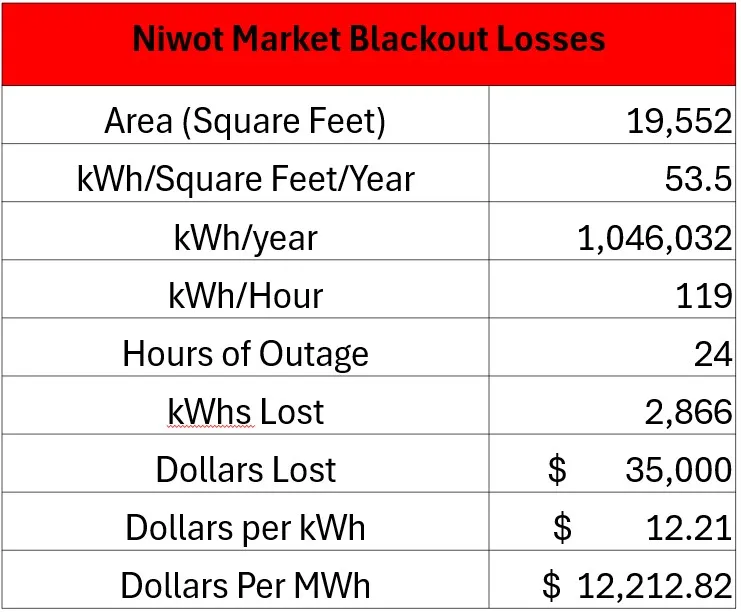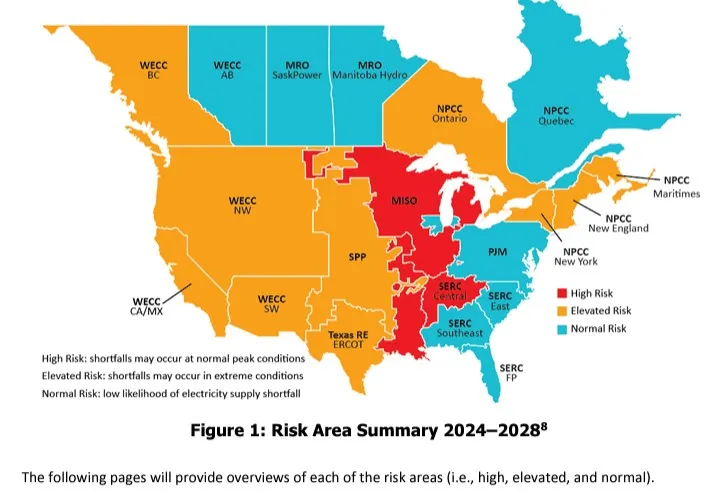We recently wrote about hundreds of thousands of Xcel Energy customers in Colorado who lost power as high winds damaged power lines, and Xcel preemptively shut off the power to 55,000 customers to mitigate the risk of wildfires. Among the customers who lost power were homeowners and small businesses who received little to no warning.
The Denver Post detailed how families experienced entire refrigerators and freezers full of food spoiling, forcing them to refill them at a time when food costs are 25 percent higher than they were four years ago.
Business owners without power lost tens of thousands of dollars due to the outages, which stemmed from lost revenue from being unable to do business and lost products. Restaurant and grocery store owners were hit particularly hard as they scrambled to save as much of their inventory as they could with refrigerated trucks (which, thankfully, run on diesel fuel). Still, in many cases, the damage had already been done.
Thankfully, no one appears to have died from the power outages—unlike Texas during Winter Storm Uri—but spoiled refrigerators full of food, shuttered businesses, and lost wages for hourly workers who could not go to work are all examples of the high cost of unreliable electricity.
We often hear about the costs of greenhouse gas emissions, but proponents of increasing our reliance upon weather-dependent wind and solar generators never want to include the virtually unlimited negative externalities that stem from having unreliable power.
For example, we can explore the economic cost of blackouts by examining businesses in Colorado that lost power during the recent utility shutoff.
The Niwot Market is a small, family-owned, and operated grocery store in Niwot, Colorado, that sells groceries and natural pet supplies and operates a deli and sushi bar. Despite the best efforts of the store owners to obtain refrigerated trucks, the Denver Post reported the market lost $35,000 due to lost sales and thousands of dollars in melted ice cream, frozen deli meat, and other spoiled products.
According to the U.S. Energy Information Administration’s Commercial Buildings Energy Consumption Survey, the average grocery store uses 53.5 kilowatt hours (kWh) of electricity per square foot every year. Using the measuring tool on Google Maps, we calculated the store is roughly 19,552 square feet, and as a result, we estimate it consumes around 1.046 million kWh per year or 119 kWh per hour.
In a phone call with Seth Niwot, a co-owner of the Niwot Market, we learned that the store was without power for 24 hours and confirmed that it experienced around $35,000 in losses. This equates to around $1,460 per hour of power loss.
We can also calculate this cost in terms of the amount of electricity lost. The economic damage of interrupted electricity service to the grocery store was $12.21 per kWh, or an eye-watering $12,212.83 per megawatt-hour (MWh), which you can see in the table below.

While the blackouts that affected the Niwot Market were the result of attempts to mitigate the risks of wildfires, the Long-Term Reliability Assessment published by the North American Electric Reliability Corporation (NERC) suggests the risks of blackouts are growing in America due to state mandates for carbon-free electricity and Environmental Protection Agency regulations force the premature retirement of the nation’s coal fleet and severely restrict our ability to use natural gas.

These policies, coupled with trillions of dollars in federal subsidies for wind and solar generators, will leave us increasingly dependent upon the cooperation of the weather to maintain grid reliability.
Our modeling of the Colorado Energy Plan for the Independence Institute suggests that overreliance on intermittent generators will result in more blackouts, headaches, and financial losses for business owners across the state. But hey, Generac sales will boom.
The Niwot Market’s experience demonstrates that discussions about the externalities of a given generation resource should be summarily ridiculed unless they also include the positive externalities of delivering reliable electricity around the clock.
If they don’t, they are missing a massive $12,212,82 piece of the puzzle.

